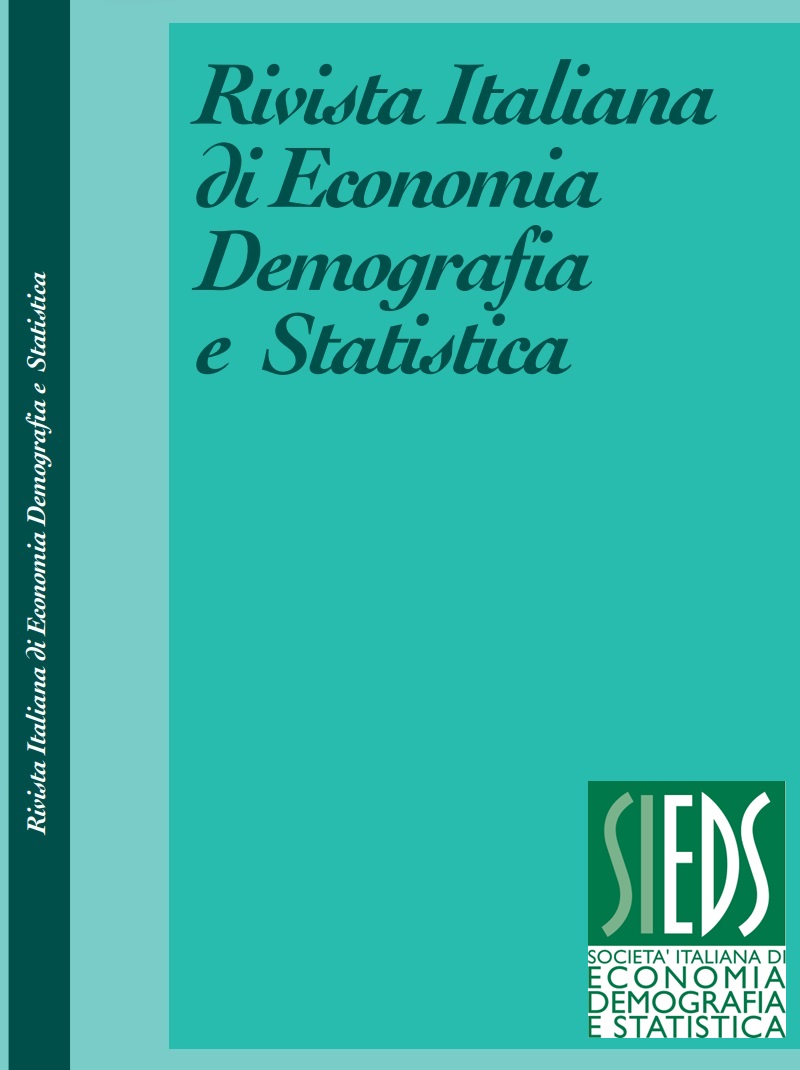The care needs of frail elderly: a regional analysis of the supply of health care services
DOI:
https://doi.org/10.71014/sieds.v77i3.204Abstract
The developed world’s population is aging because of the trends of increasing in life expectancy and decreasing of fertility rate. These demographic changes result in an increasing share of old and very old people, leading to new patterns of morbidity and mortality, such as the increasing number of degenerative and often multiple and chronic diseases. These trends are predicting the increase of demand on health care services. This paper aims to analyze at the regional level, thanks to the use of twenty-four indicators from ISTAT and Ministry of Health sources, the needs of frail elderly people and the care they receive, both informal and formal, taking into account the presence of alternative services, such as home care assistance. Since it is a complex and multidimensional phenomenon, because it is defined and represented by a set of elementary indicators, it was decided to synthesize the information through the MPI (Mazziotta-Pareto Index), a non-compensatory composite index. Specifically, the twenty-four elementary indicators are grouped in six synthesis indices related to the following thematic areas: potential needs, demo social-health context, residential supply, complementary and alternative territorial supply, hospital inappropriateness and informal care. The results highlighted that in the South there are high values of potential needs and informal care. The North is characterized by a low level of potential care need and greater presence of residential and territorial supply. This study provides policy makers a feasible and objective methodological approach that makes possible a global reading of the phenomenon examined, easy to calculate and to interpret. The strengthening of territorial supply and greater coordination between hospital and territory for the taking care of frail elderly, should be capable to keep elderly healthy and guarantee an improvement in the patient’s real and perceived quality of life.
Downloads
Published
Issue
Section
License
Copyright (c) 2023 Lorella Sicuro, Domenico Tucci, Rosalia Coniglio

This work is licensed under a Creative Commons Attribution 4.0 International License.



